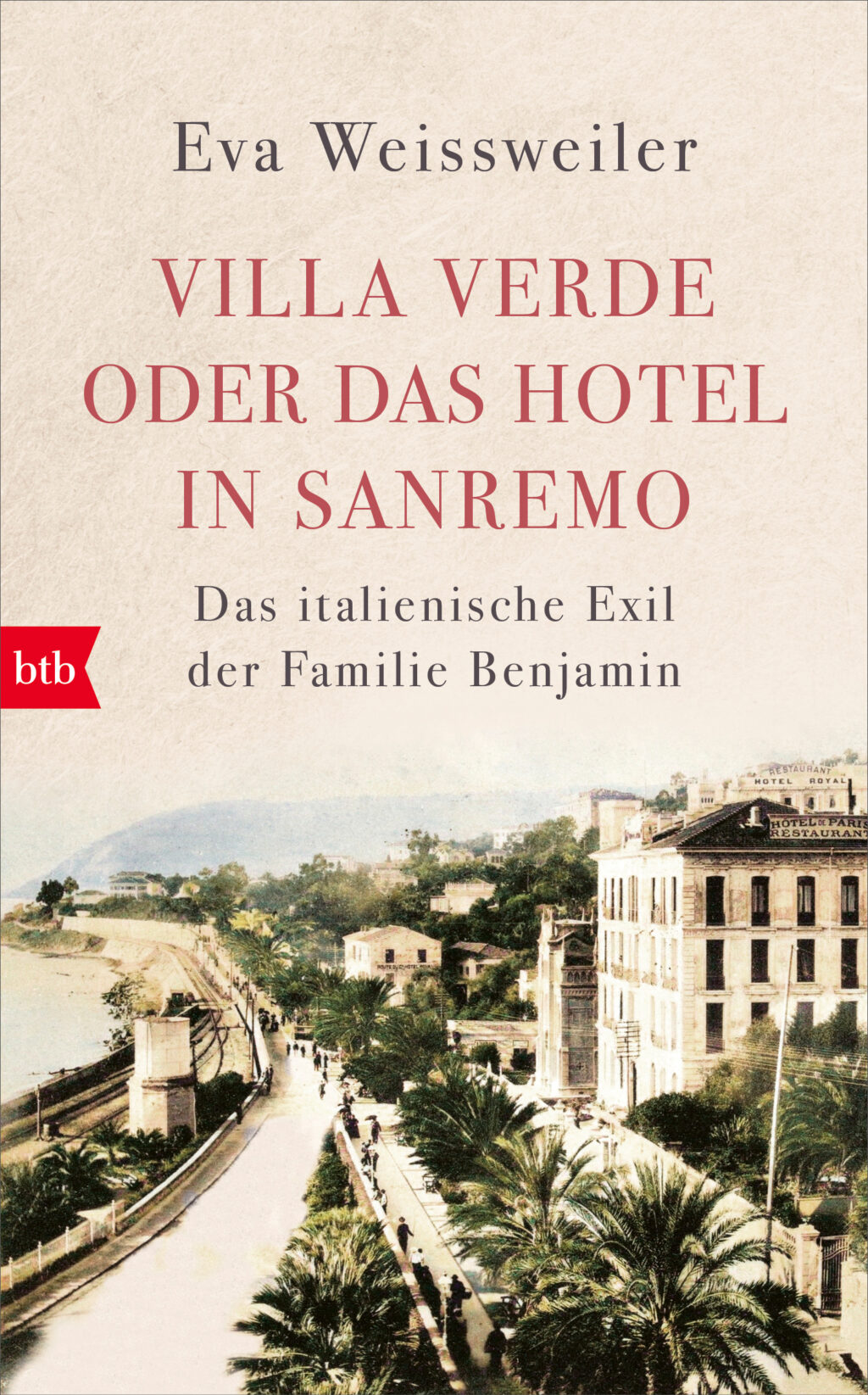published in Issue Five

(btb, 2022)
On Dora Kellner, Walter Benjamin and the biography of a hotel
You could tell the story of modernity in Europe through its hotels. There’s surely not a single topic or debate that wasn’t discussed over their polished wooden tables and chrome bars, or in the snug armchairs of their lobbies and the deckchairs of their beachside terraces. We might imagine them as hideouts or shelters, at once public and clandestine, boltholes against the swarm and rush of the world. A comforting thought, yet if the door’s always open, you’re only ever passing through.
When Edward Lear settled in San Remo, the city of flowers, he built himself a paradise. Twice. The writer of nonsense verse, who boasted of having given drawing lessons to Queen Victoria, had a grand house constructed in the 1870s that he named the Villa Emily after the wife of Alfred Tennyson, whom Lear had come to know while illustrating some of Tennyson’s poetry. But when a massive modern hotel was built right across the way, obstructing his view, the enraged Lear had an exact replica of the Villa Emily built closer to the sea, which he named Villa Tennyson and where he would live out the last decade or so of his life.
The Villa Emily, meanwhile, became a guest house and was renamed Villa Verde alla Foce. In March 1934, a year after the Nazis took power, the Austrian-Jewish translator and journalist Dora Sophie Kellner fled her home in Berlin to travel to Cannes for the first time in her life and then on to San Remo. Her son Stefan followed a year later. Dora’s emigration effectively marked the end of her writing career, but not of her association with European literary culture. She first worked as a cook at San Remo’s Hotel Miramare, and later took over the running of the Villa Verde. This establishment, perched above the azure waves of the Mediterranean amid the verdant, sun-kissed hills of the Ligurian riviera, would become a haven for Europe’s literary exiles, writers and intellectuals vying for an escape from the rising tides of fascism. It bore witness to, and offered precarious respite from, the eddies and storms of the twentieth century.
One such itinerant exile was Dora’s ex-husband and Stefan’s father, the critic, philosopher, and translator Walter Benjamin. Theirs had been an intense, sometimes very difficult marriage, but as Eva Weissweiler recounts in her book on the history of the hotel, Villa Verde oder das Hotel in San Remo, it really became a kind of friendship in which each led their own life. In biographies of Benjamin, the Villa Verde is only mentioned in passing. Weissweiler is the first to tell the story of this hotel — to write, that is, the hotel’s biography. Its bedrooms and terraces staged plenty of drama: jealousies, intrigues, romances, and tragedies of exile, both large and small. Nowadays, the shabby elegance of itinerant intellectuals, coasting up and down the Riviera, might tempt us to nostalgia. Weissweiler’s book resurrects a sharper and more multifaceted picture of life and survival in some of modern Europe’s darkest days.
Meaning literally « green villa at the mouth », the building was named, presumably, after the Torrente Foce which flows into the Mediterranean nearby. Yet the name also carries echoes of Lear’s much adored cat Foss, who was the prime reason for the second villa’s being constructed to the exact same specifications as the first. Lear wanted to make sure, at all costs, that his feline friend wouldn’t be upset by the relocation.
Look no further, for instance, than the obligatory croissant in the opening scenes of Transatlantic, the recent seven-part Netflix series, created by Anna Winger and Daniel Hendler, which zestily dramatizes the story of Emergency Rescue Committee established by the American journalist Varian Fry. Between August 1940 and September 1941, the Committee managed to save over two thousand people from Nazi persecution, including a vast array of Jewish writers and intellectuals. The gang’s all there: Walter Benjamin, Max Ernst, André Breton, Hannah Arendt, Peggy Guggenheim and many others, plus a few made-up characters for good measure, all brought gamely to life by the cast. Yet the series unfolds in a Marseille that looks cleaner and glossier than it could ever possibly have looked at any time in its history, never mind during World War Two.
Where summer, as « The Waste Land » forecasts, can surprise you with a shower of rain.
Those schooldays were not otherwise a subject of fond memories for Benjamin, as he noted in « A Berlin Chronicle » : « little ... has remained in my memory except those perfect emblems of imprisonment: the frosted windows and infamous carved wooden embattlements over the doors ». Walter Benjamin, Reflections: Essays, Aphorisms, Autobiographical Writings, translated by Edmund Jephcott (Schocken, 1986), 14.
A West German adaptation starring the fêted actor Josef Meinrad aired between 1966 and 1972 and remains to this day a beloved classic series that is regularly rerun on German television.
Lisa Fittko, Escape through the Pyrenees, translated by David Koblick (Northwestern University Press, 1991) and Lisa Fittko, Solidarity and Treason: Resistance and Exile, 1933-1940, translated by Roselyn Theobald (Northwestern University Press, 1993).
György Lukács, Theory of the Novel: A Historico-Philosophical Essay on the Forms of Great Epic Literature, translated by Anna Bostock (MIT Press, 1971), 22, from the preface (dated July 1962) to the 1968 reissue of the original 1920 German edition.
